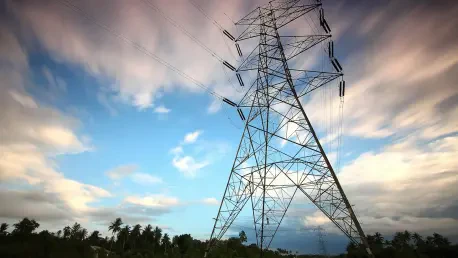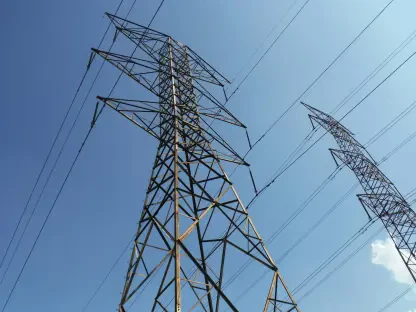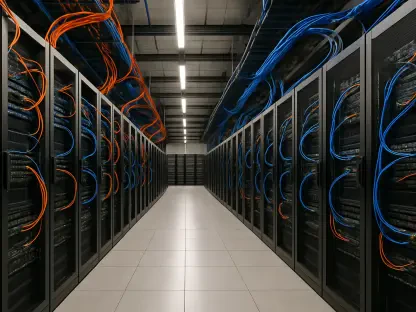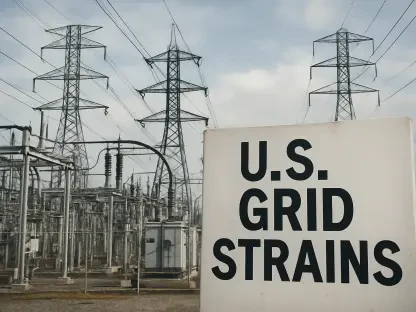Introducing Christopher Hailstone, a distinguished expert in energy management, renewable energy, and electricity delivery, who has been a key figure in the field of utilities, grid reliability, and security. As Maryland institutes a law demanding that electric utilities disclose their voting actions at PJM Interconnection stakeholder meetings, his perspective is invaluable for understanding the implications of this mandate. This interview explores the nuances of the law, its wider impact, and the ongoing dialogue around transparency in the electricity sector.
What prompted the introduction of the new Maryland law requiring electric utilities to disclose their PJM votes?
The driving force behind the introduction of this law was the growing concern about the lack of transparency in decision-making processes that affect the costs and operation of electricity utilities. Maryland families have been struggling with high electric bills, and there was no prior requirement for utilities to disclose their votes on crucial transmission policies and market rules. This initiative aims to illuminate how these decisions are made, ensuring that utilities are not operating in the shadows when the consequences can be financially significant for consumers.
Could you explain how the voting disclosure process at PJM stakeholder meetings will work under this new law?
Under this new law, utilities are tasked with filing annual reports with the Maryland Public Service Commission that detail both their public and nonpublic votes on matters discussed at PJM stakeholder meetings. This involves compiling a comprehensive record of votes, which must be submitted by February 1 each year. The stakeholders, including the public and state regulators, will gain critical insights into the regulatory and operational choices these utilities make, ideally enhancing accountability and transparency in their actions.
How will the annual filing with the Maryland Public Service Commission impact electric utilities?
This filing mandates utilities to be more meticulous in recording their voting behavior at PJM meetings. The report must cover both public and nonpublic votes, thus holding utilities accountable to regulators and the public. This disclosure could potentially strengthen the relationship between utilities and the Maryland Public Service Commission, facilitating more informed decision-making on regulatory issues. However, it also introduces a level of administrative duty that utilities must be prepared for, potentially affecting their operational workflows.
How are similar transparency bills progressing in states like Delaware, Pennsylvania, and Illinois that are also within PJM territory?
The momentum behind transparency bills in other states reflects a regional trend toward accountability. Each state is approaching it with its distinct legislative strategy, but their shared connection within PJM territory means they face similar challenges and motivations. Progress varies, influenced by political landscapes and the urgency with which these states address electricity system transparency. However, like Maryland, there’s a growing recognition that clear legislation could provide clarity and perhaps curb practices that unreasonably increase consumer costs.
How did bipartisan support influence the passage of Maryland HB 121?
Bipartisan support was critical to the success of HB 121. Utility transparency is not a contentious issue but a common-sense measure seen across party lines as beneficial for consumers. Collaborating across political divides underscores the widespread acknowledgment of electricity system transparency’s role in protecting consumer interests. Such consensus was pivotal, underscoring that the law addresses essential, practical concerns that resonate throughout the community regardless of political affiliation.
Can you discuss the outcomes of the broader utility legislation proposed last year, which included similar transparency requirements?
Last year’s broader utility bill did not progress to the governor’s desk but created a framework for discussions surrounding transparency and accountability in utilities. Although it encompassed additional measures beyond transparency, like restrictions on lobbying-expense ratebasing, the legislation set the stage for subsequent efforts including HB 121. While those broader efforts faced setbacks, they contributed to a legislative environment ready to embrace this transparency-focused law, marking incremental progress in utility regulation reform.
What are some of the other measures included in the comprehensive package of this year’s legislation besides HB 121?
The legislation package represents an ambitious regulatory overhaul with several significant provisions. It includes an authorization for solicitations for substantial dispatchable generation and energy storage resources, separate rate structures for large-load customers, and fresh restrictions on gas infrastructure investments. These measures collectively aim to modernize and improve the state’s energy landscape, echoing the need for a diversified, transparent, and sustainable electricity system.
In your opinion, how does HB 121 help prevent utilities from operating “in the dark” regarding transmission policies or market rules?
HB 121 effectively shines a light on utility operations by demanding visibility into their decision-making processes in stakeholder meetings. This transparency prevents utilities from making opaque decisions that could skyrocket costs or affect network reliability without scrutiny. By opening up the voting process and requiring detailed reporting, regulators and consumers can better understand and challenge policies that might not serve their interests, fostering a more collaborative and open utility environment.
How did PJM respond to this new Maryland law regarding transparency?
PJM, while supportive of transparency efforts, raised concerns about the administrative load this law places on utilities. They assure that their operations are already transparent but acknowledge the extra responsibility utilities will have to manage under this legislation. Despite these concerns, PJM does not foresee significant changes to how they conduct business, indicating their commitment to maintaining open and accessible stakeholder processes despite the additional scrutiny.
How might this law impact the everyday operations of electric utilities like FirstEnergy’s Potomac Edison, or Exelon’s subsidiaries, Pepco and Baltimore Gas & Electric?
For utilities like FirstEnergy’s Potomac Edison and Exelon’s subsidiaries, the law becomes an intricate part of their operational responsibilities, mandating new systematic approaches to track and report voting activities. Although their statements reflect neutrality toward the law, its compliance introduces structured methodologies to ensure accountability, which might necessitate internal changes in how they engage in PJM discussions and manage their stakeholder communications.
Given that most PJM stakeholder meetings are already open to the public, how does this new requirement enhance transparency?
While many PJM meetings are publicly accessible, HB 121 extends transparency beyond just the ability to attend meetings; it dives into understanding the specific voting behaviors of utilities. The requirement compels utilities to disclose nuances in their votes, providing a more comprehensive view to stakeholders, thus enhancing the accessibility of crucial information that has direct implications for market rules and transmission policies, offering deeper insights than mere meeting attendance could.
What are the limitations of HB 121 in addressing broader transparency concerns in the electricity system?
Despite its strides toward transparency, HB 121 falls short in influencing merchant generators, who significantly impact PJM voting dynamics with interests that might contrast public benefit. The law lacks jurisdiction over these generators, thus limiting its reach to completely revamp transparency. Realizing full transparency demands further legislative scrutiny and reforms to address these blind spots, ensuring that all entities within the electricity system are equally held accountable.
How do merchant generators influence PJM voting, and what impact does this have on utility consumers in Maryland?
Merchant generators have a critical role in shaping PJM voting outcomes, often championing rules that drive their profitability, potentially at the expense of broader consumer interests. Their influence can skew market conditions, reinforcing strategies like Reliability Must-Run rules that maintain high costs, challenging the goal of affordable electricity. As merchant generators are not covered under HB 121, these dynamics remain an area of concern that requires continued legislative exploration and action.
What additional measures could further improve transparency in the electricity market according to your perspective or experiences?
To advance transparency, further legislation could mandate the disclosure of voting strategies not only from public utilities but also from merchant generators, fostering comprehensive scrutiny across all market participants. Encouraging independent audits and reviews of decision-making processes may also help reinforce accountability. Technology and innovation can play a pivotal role, perhaps via platforms that allow real-time tracking and analysis of market votes and decisions, ensuring greater clarity and responsiveness to consumer needs.
Do you have any advice for our readers?
For readers engaged in or affected by energy policies, staying informed is key. Understand the implications of legislative changes, and actively participate in public forums or stakeholder meetings when possible. Advocate for increased transparency and accountability in energy management, as community involvement can drive better policy outcomes that serve public interests. Your voice is vital in shaping a resilient and sustainable energy landscape.









